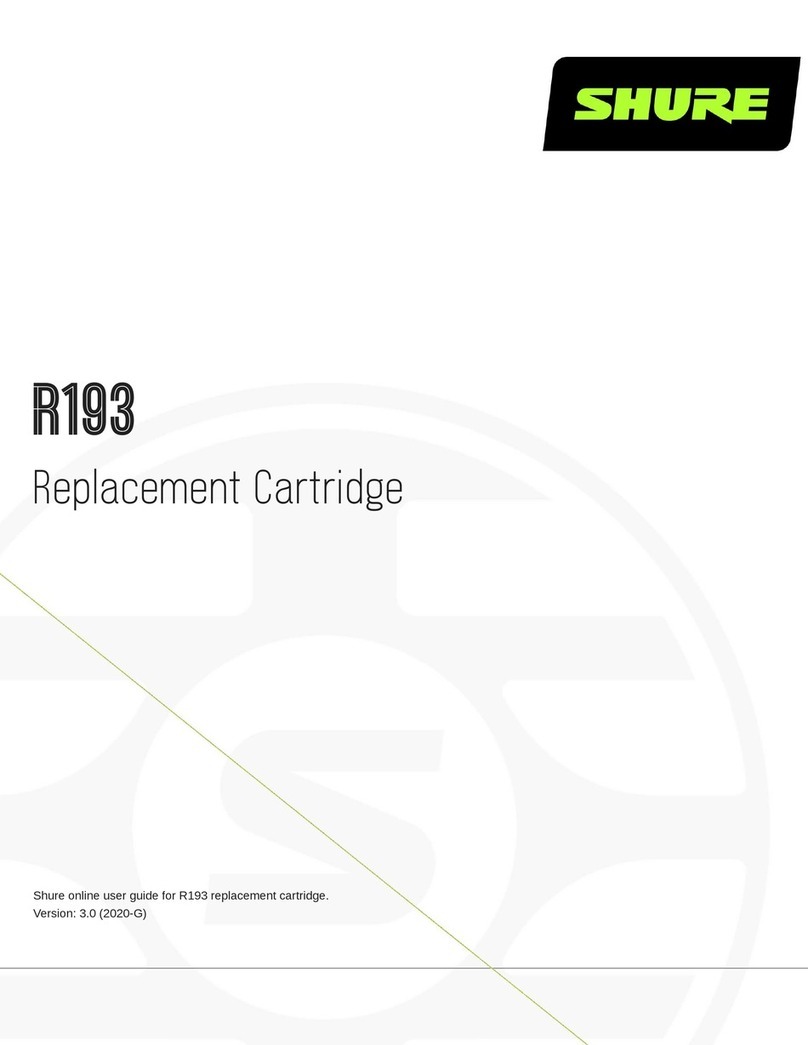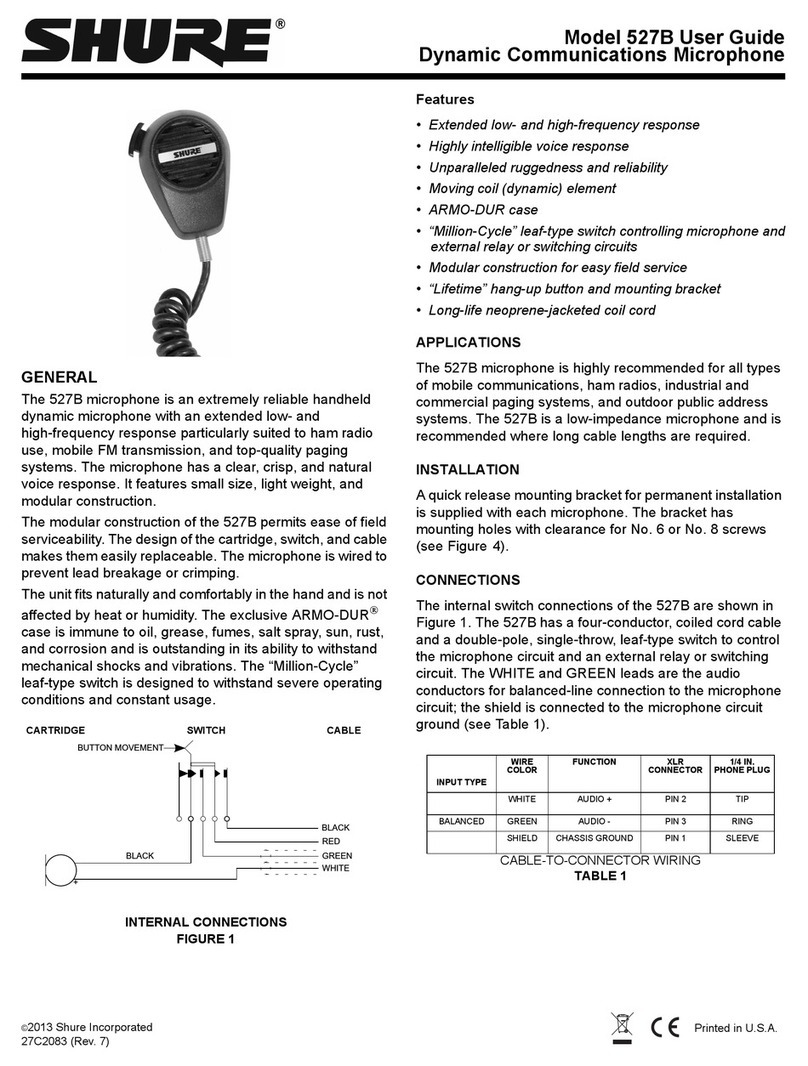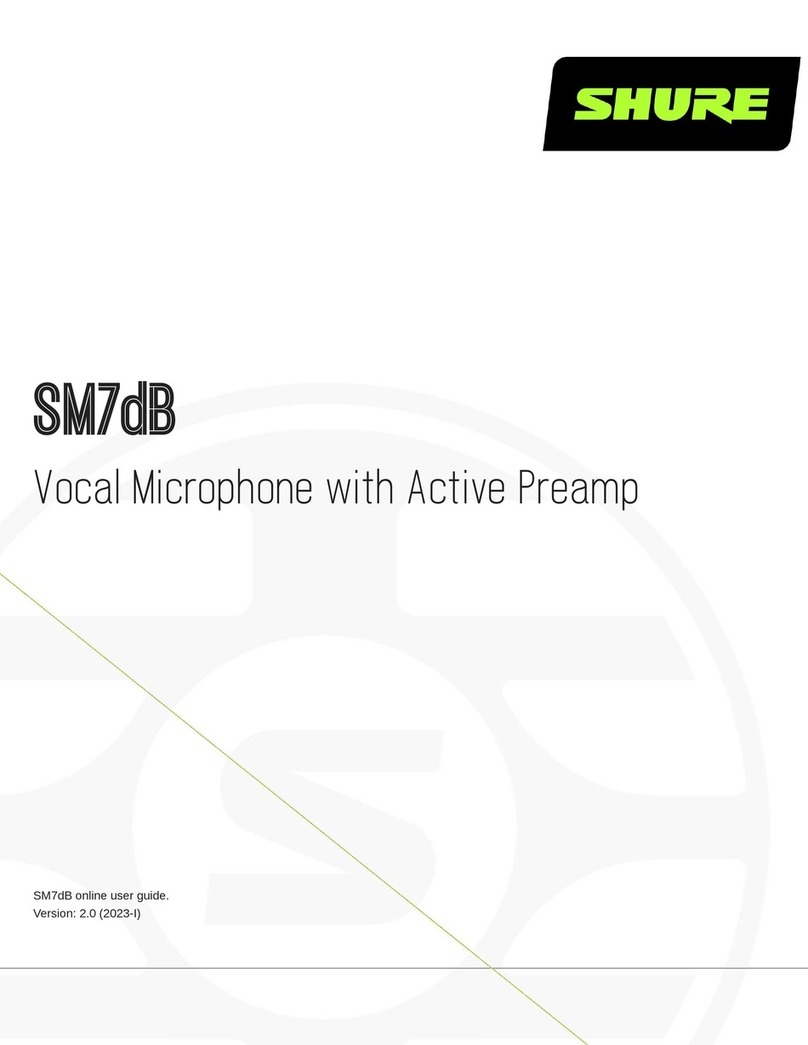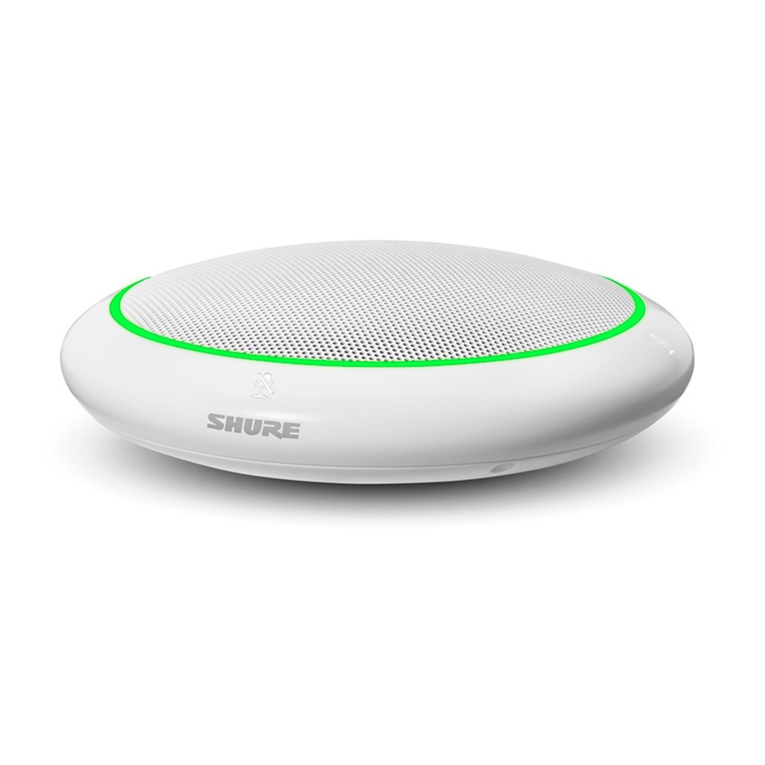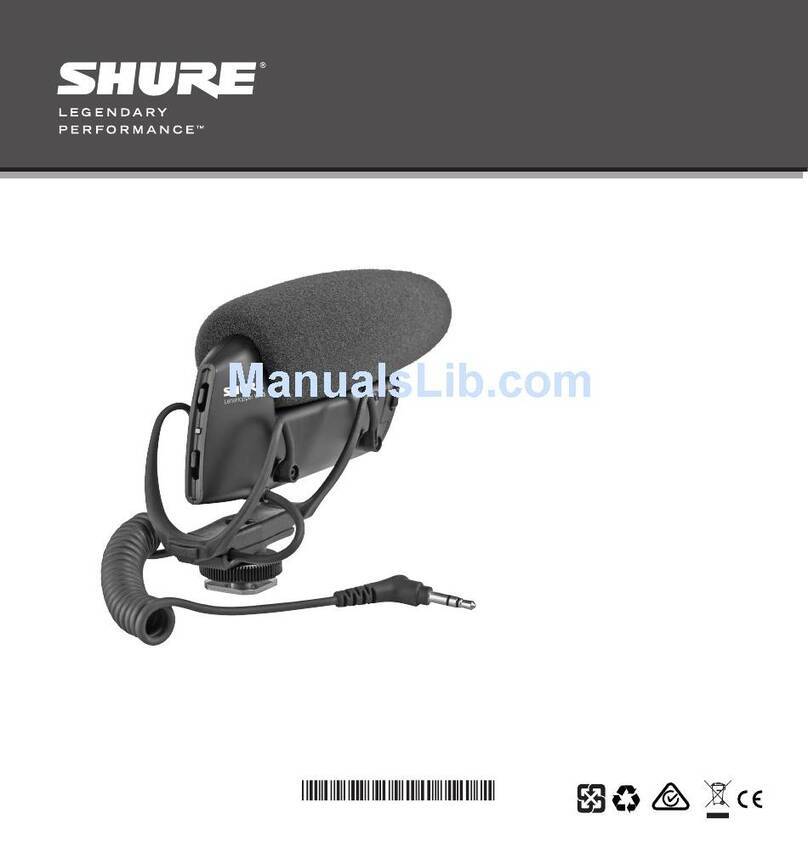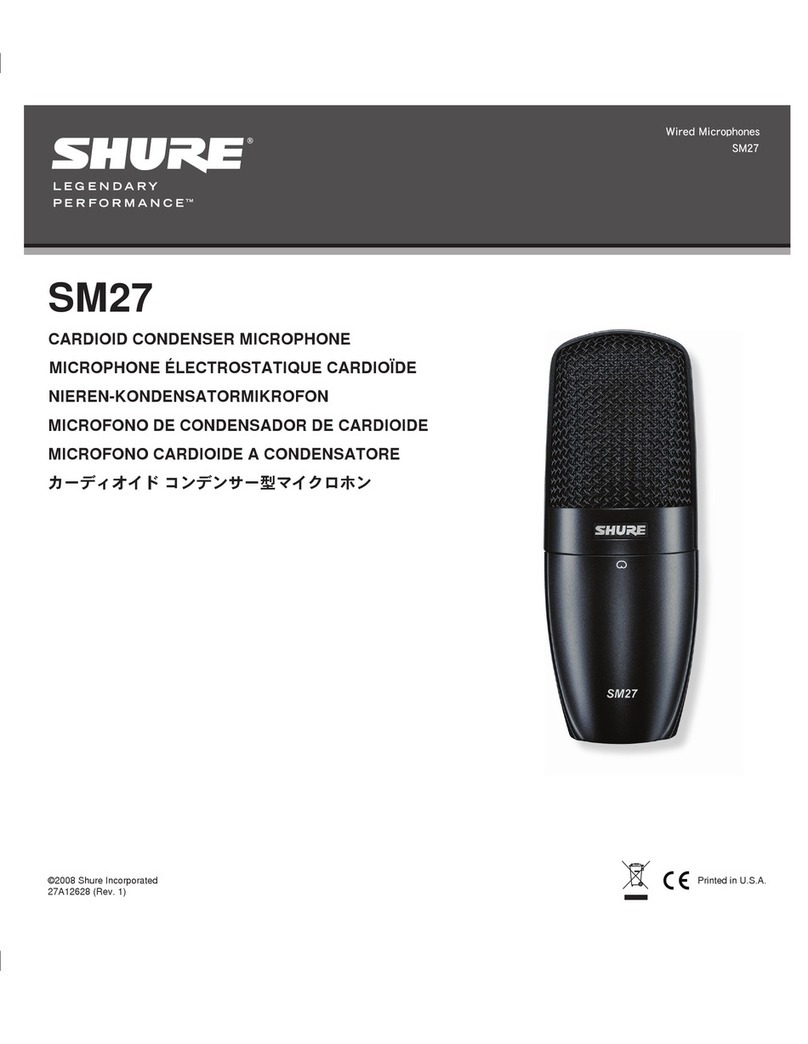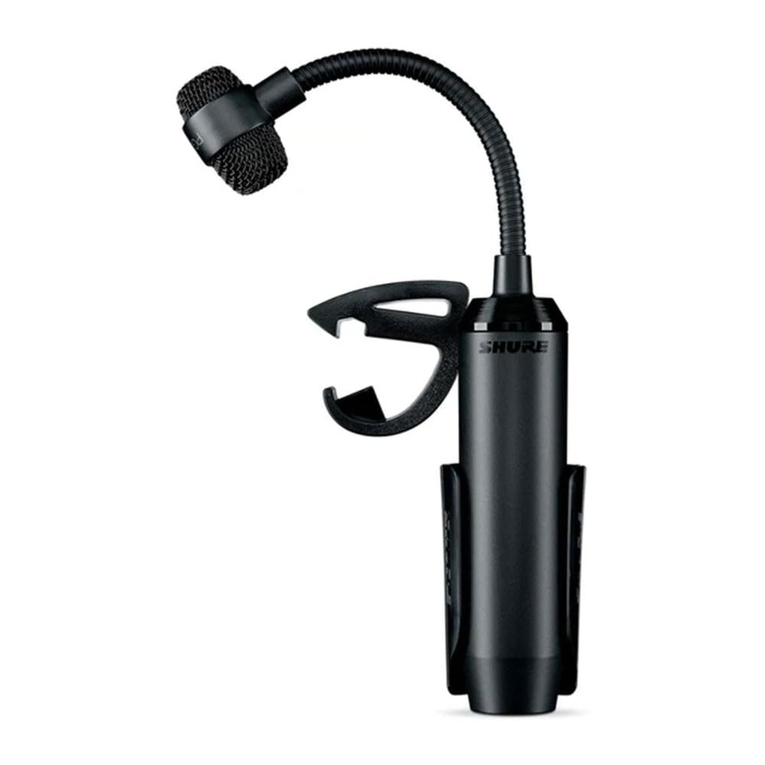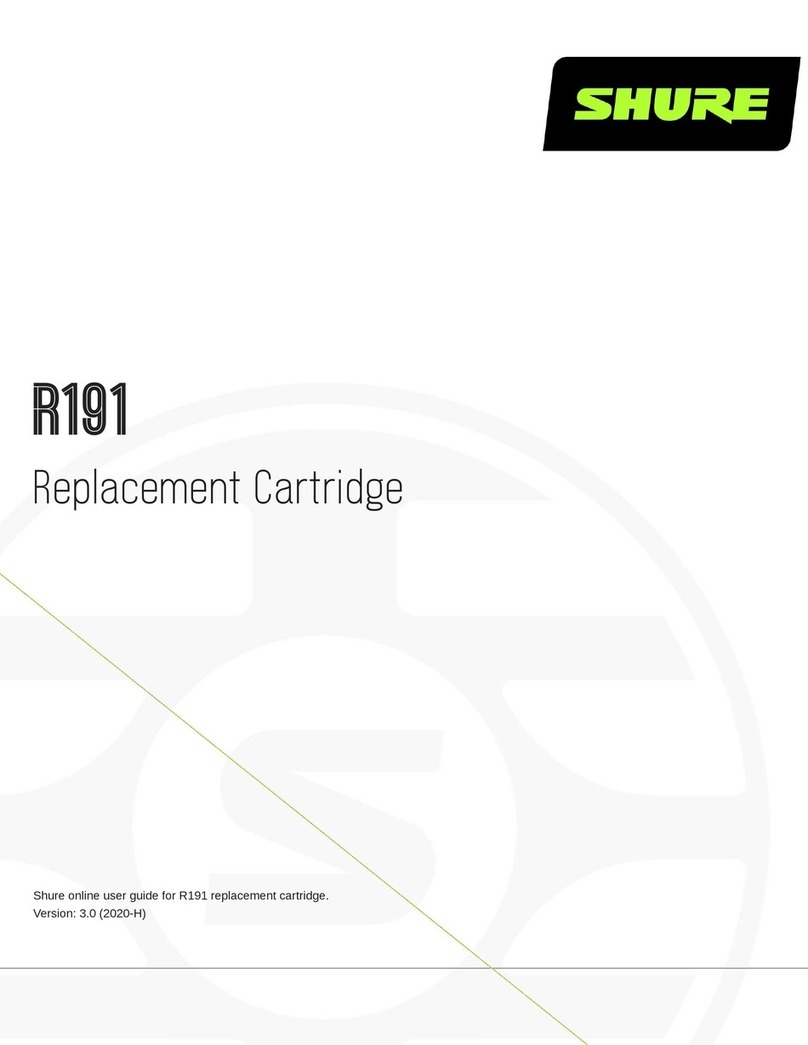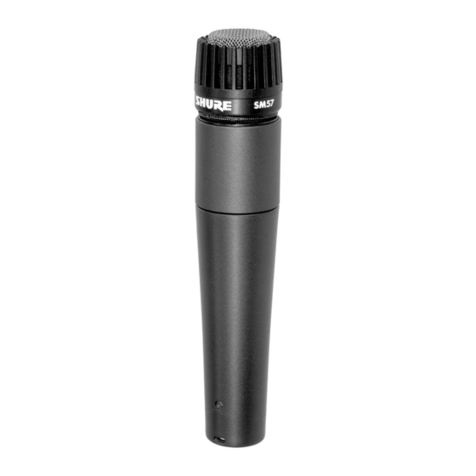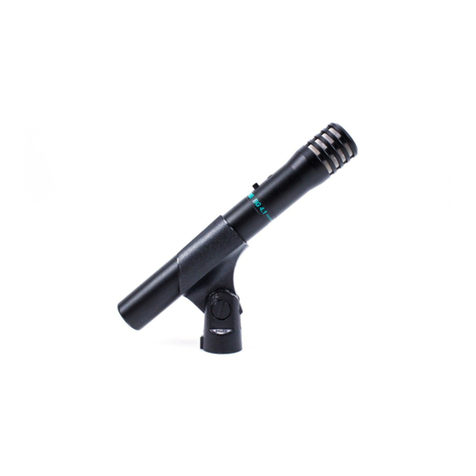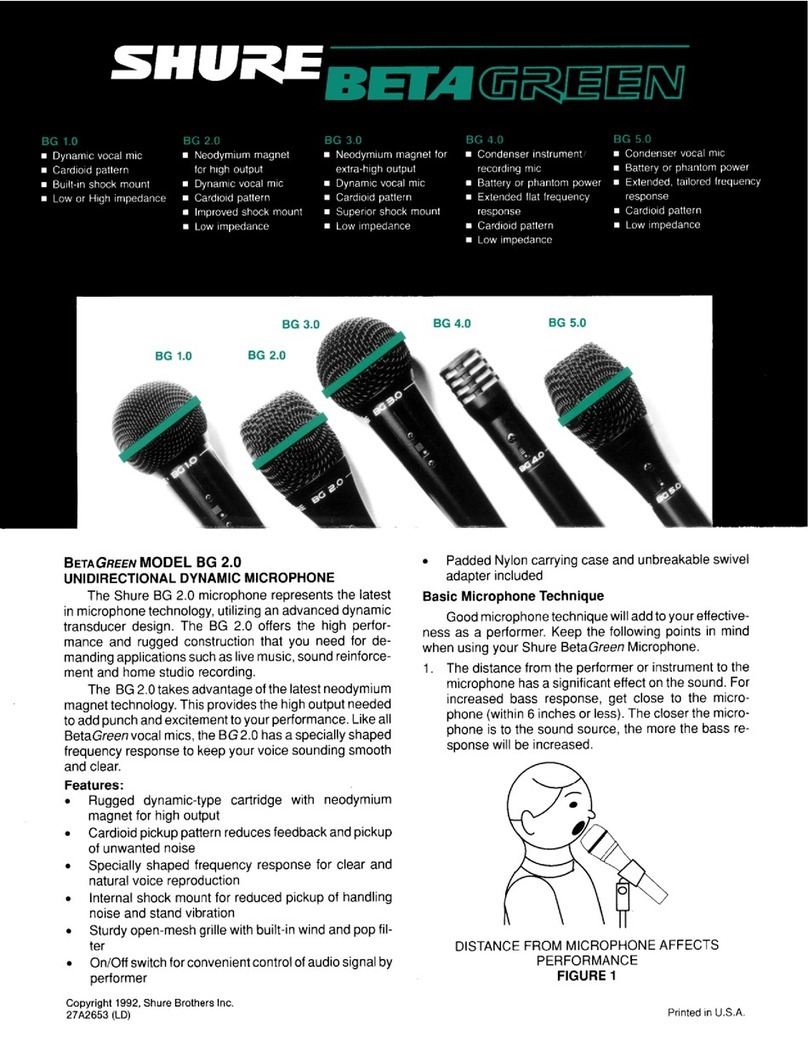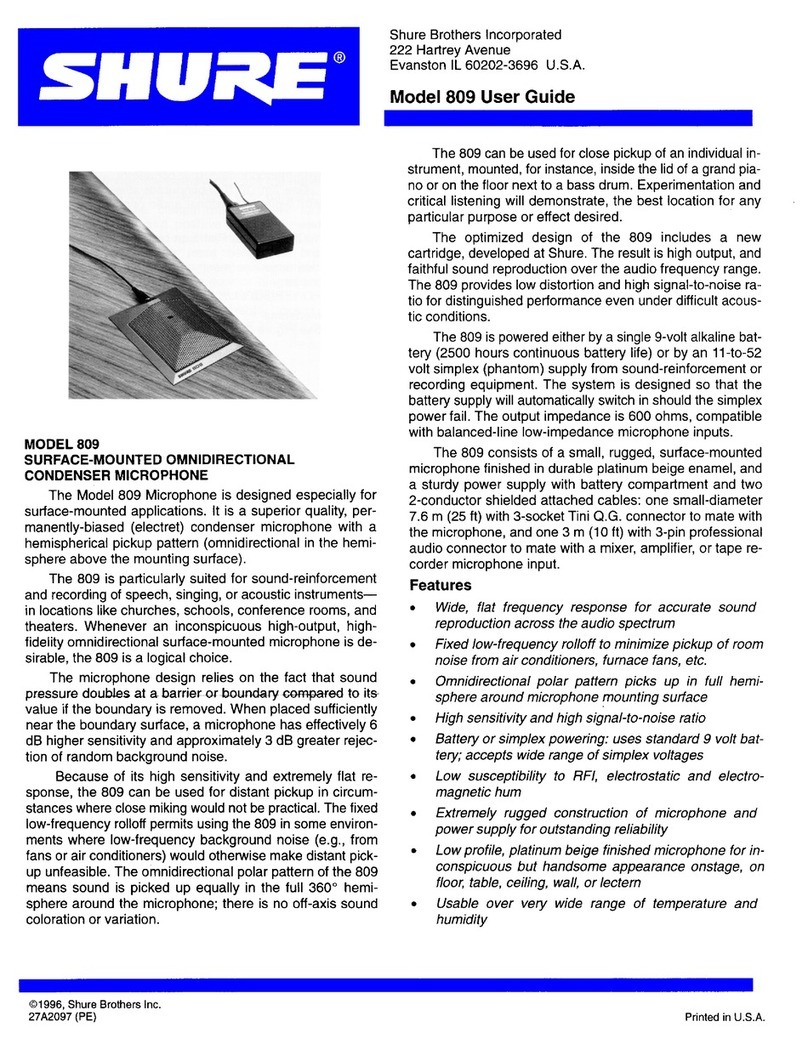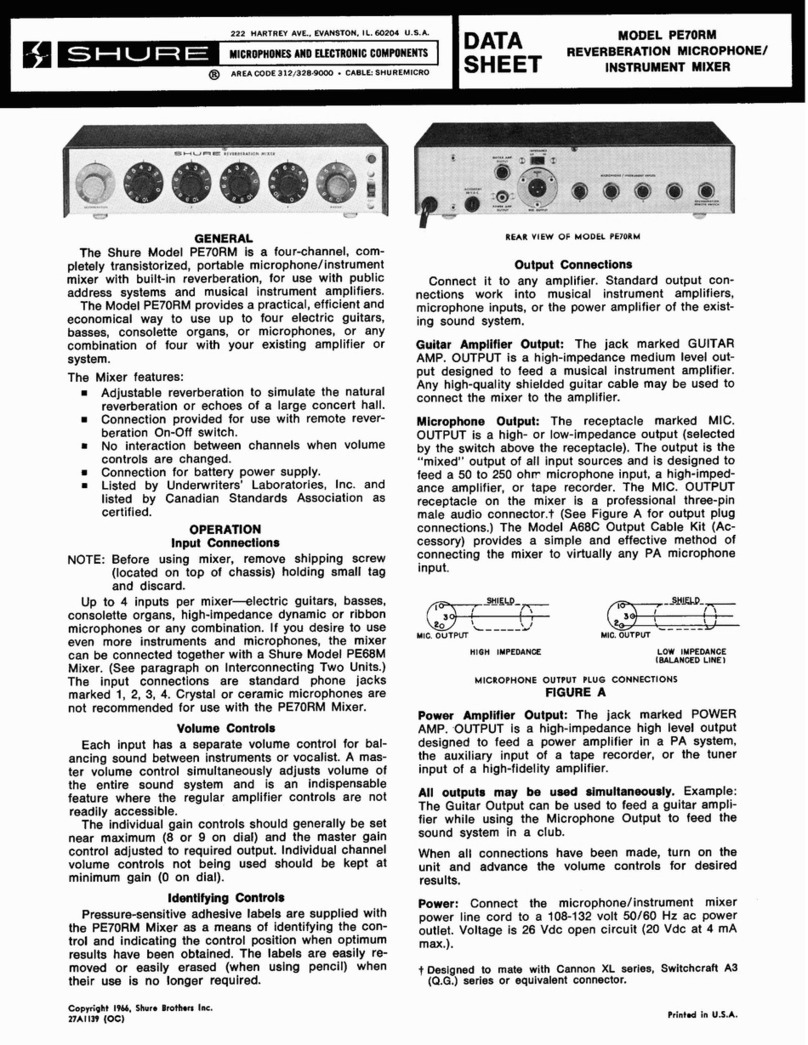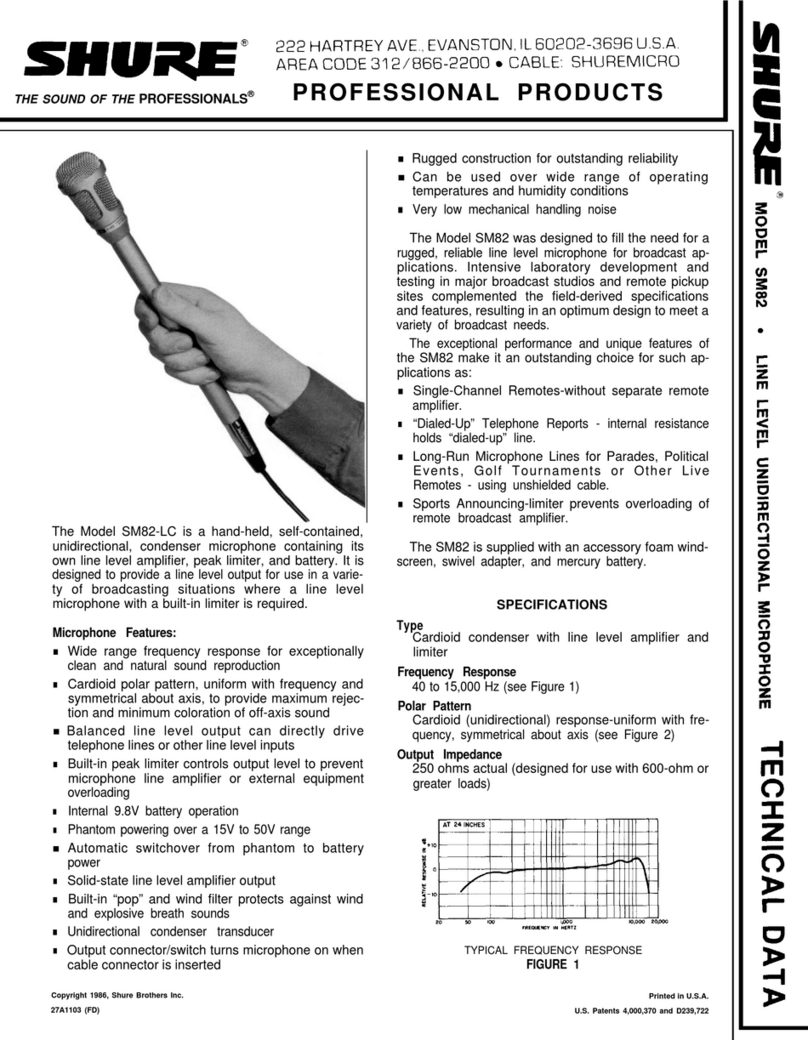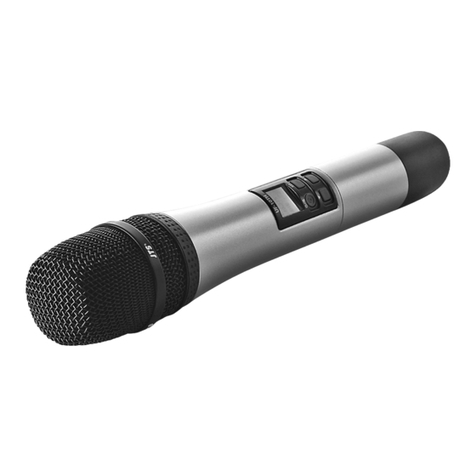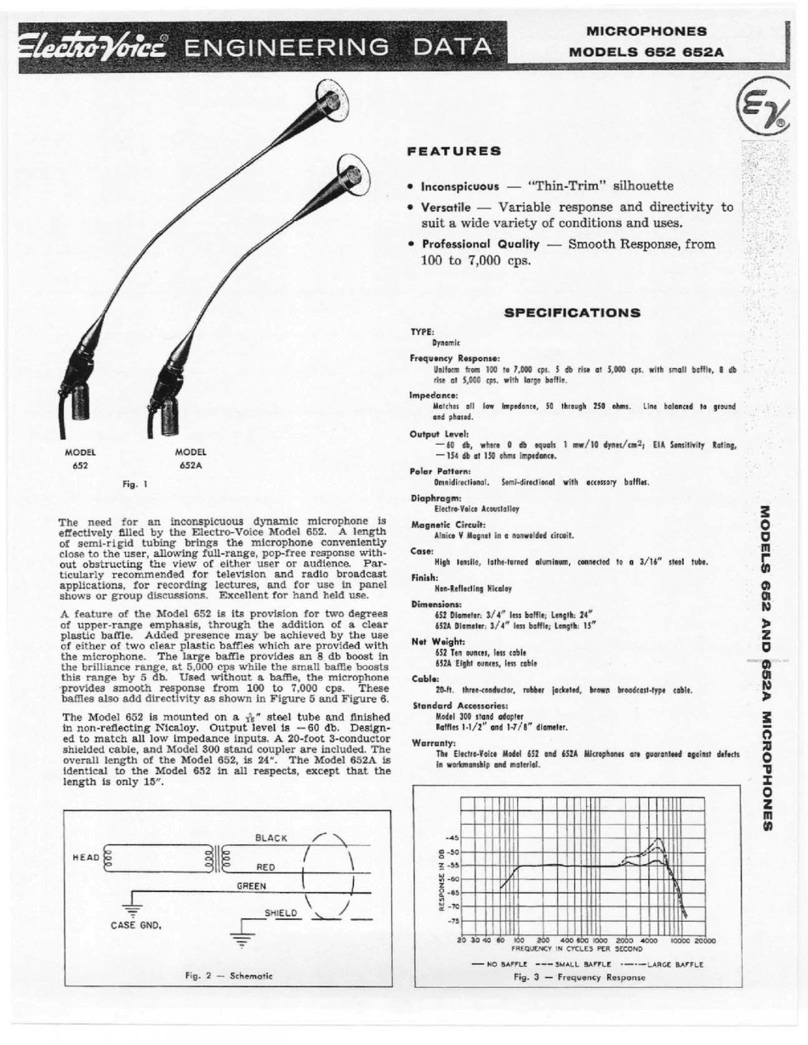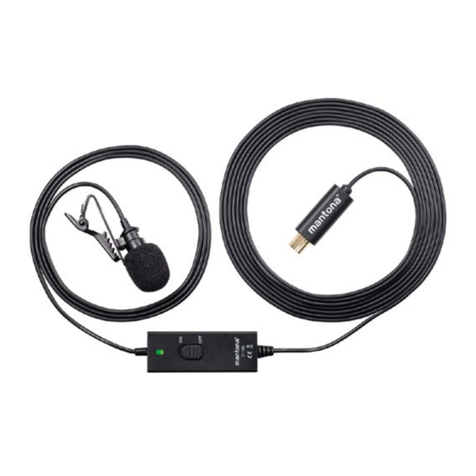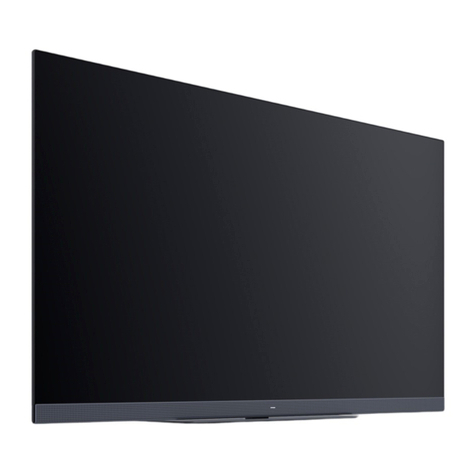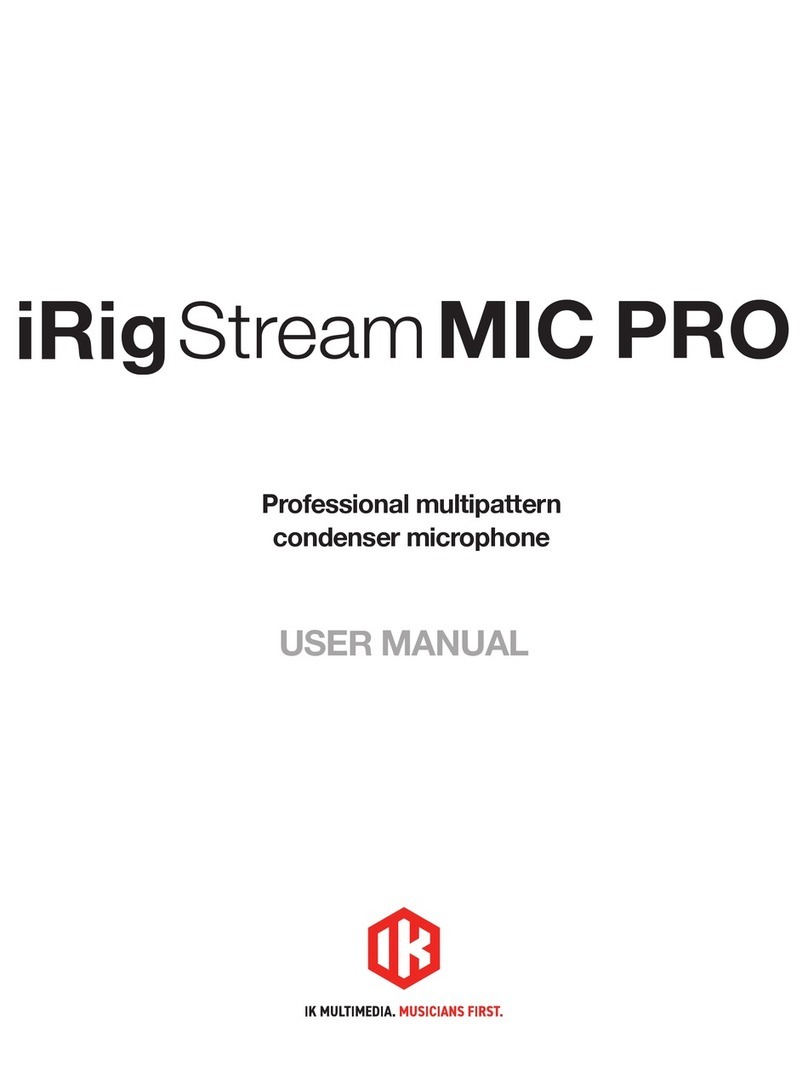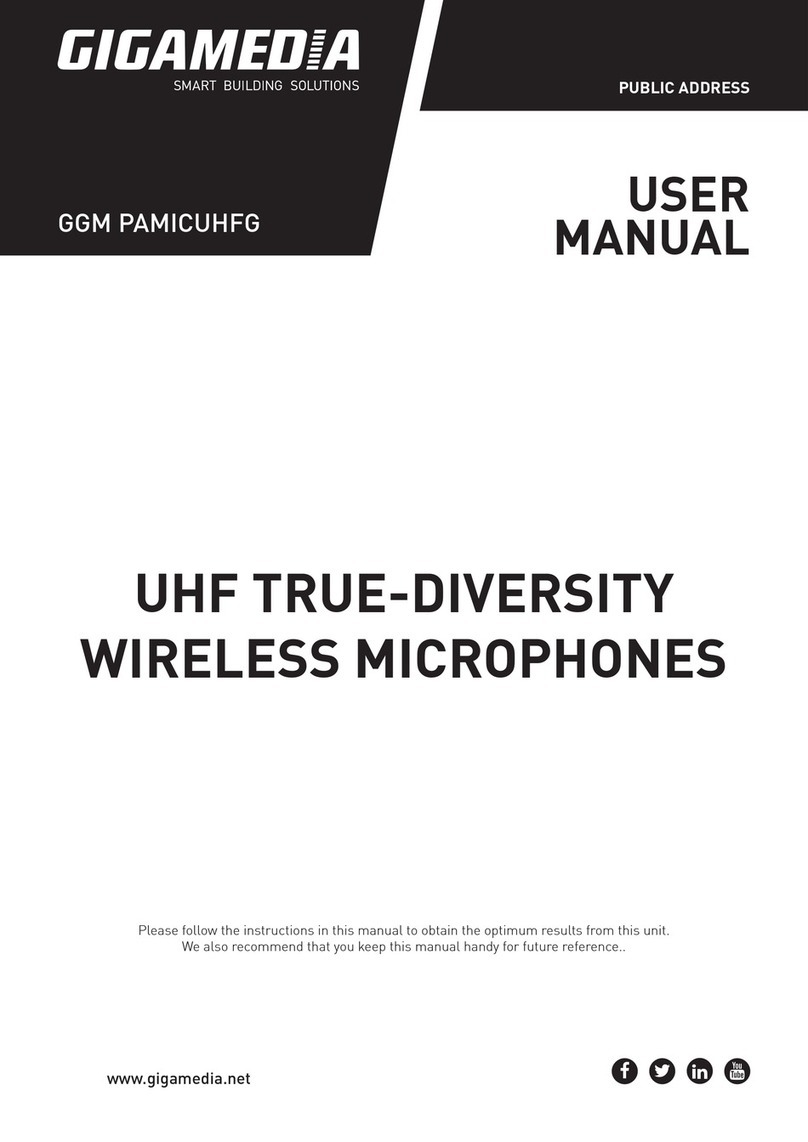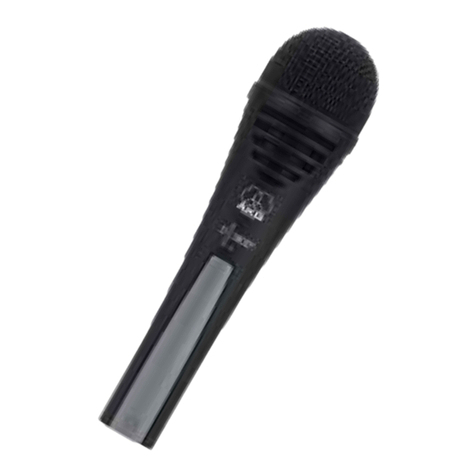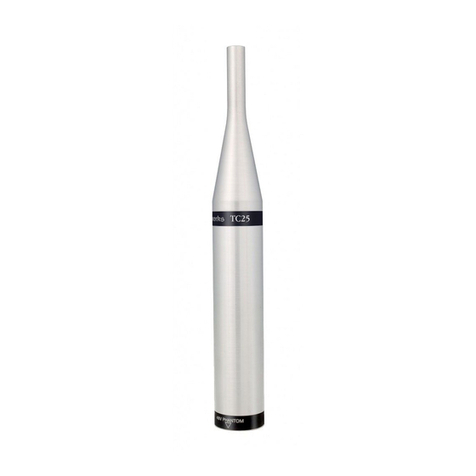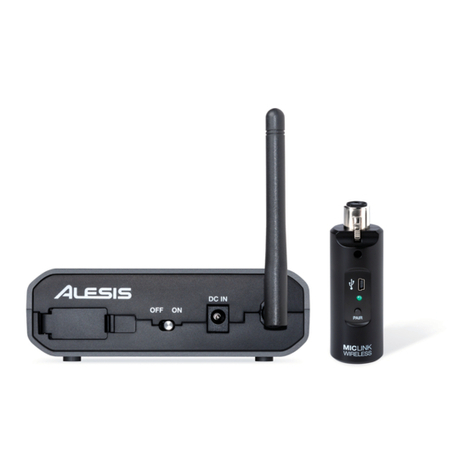HOW TO CONTROL FEEDBACK
A performer’s number one enemy in using
a
microphone is
“feedback.” This is
a
harsh hum, howl or squeal which oc-
curs when the microphone picks up sound from the
loudspeakers, re-amplifies and rebroadcasts
it
over and
over again.
The key factor in the prevention of feedback is the posi-
tion of the loudspeakers
in
relation to the microphone.
Feedback occurs if the microphone picks up sound coming
from the loudspeakers. Keep the loudspeakers
as
far to the
sides as possible-so they do not point toward the micro-
phone. Always keep the microphone pointed toward the
performer and away from the loudspeakers.
If you are in
a
room with hard walls, floor, and ceiling,
the sound from the loudspeakers may bounce back into the
microphone and create feedback. Solve this problem by
turning down the amplifier volume control and working
closer to the microphone.
(Important Note:
If
you cannot solve the feedback prob-
lem with your
SPHER-0-DYNE@
microphone,
a
Shure
Feedback Controller is suggested.)
BASIC POINTS FOR PROFESSIONAL
MICROPHONE TECHNIQUE
Proper microphone technique will add to the overall ef-
fectiveness with which you project yourself to your
audience. Keep the following points in mind when using
the microphone:
1.
Maintain the proper distance from the microphone.
When you wish to achieve an intimate tonal quality,
get closer to the microphone and lower your voice. For
wide-open “driving” effects, raise your voice and back
away from the microphone
so
that you do not over-
drive your amplifier to distortion.
2.
Don’t change your distance from the microphone
needlessly,
as
this will affect the level of sound coming
from the loudspeakers.
3.
Consider the microphone
as
an instrument and prac-
tice your technique to enhance your performance.
YOUR SHURE MICROPHONE
IS
BUILT TO LAST!
Your Shure Microphone is ruggedly built and should give
you years of uninterrupted service; however, remember
that it is
a
sensitive instrument. Avoid dropping the micro-
phone, or subjecting it to unnecessarily rough treatment.
Normal usage, of course, will not impair performance of
the unit. Use the protective carrying case to prevent dam-
age not only when traveling, but
also
when storing the
microphone.
MICROPHONE CHECK-LIST
1.
Check microphone impedance-is it correct for the
amplifier input being used?
2.
Check microphone cable connectors to microphone,
mixer and amplifier-are they tightly plugged in?
3.
Check microphone, amplifier and/or mixer.
a. Are they turned on?
b. Are volume controls turned up?
IF THE MICROPHONE DOES NOT WORK
Check the above list. If the microphone still does not
appear to be operating, check
it
on
a
spare cable. If the
microphone still does not appear to be operating, have the
microphone and cable checked by your Shure Professional
Entertainer Products Dealer, or write Service Department,
Shure Brothers, Inc.
2
3
